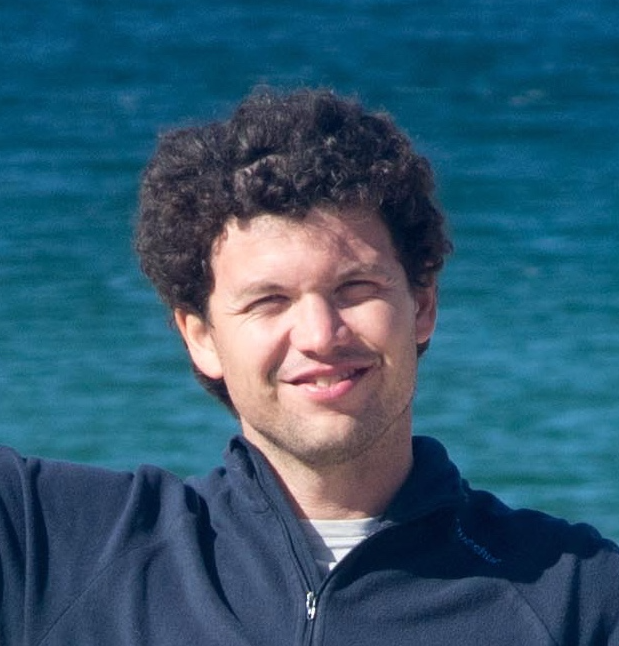Climate, ocean and oceanic carbon
Understanding the Linkages between Ocean, Carbon Cycle, and Marine Ecosystems under Climate Change
The ocean moderates and controls the timing of anthropogenic climate change. It has absorbed the vast majority of excess heat in the climate system – more than 90% since the 1970s. It is also an enormous carbon sink – each year it absorbs several billion tonnes of carbon. It has captured almost 30% of anthropogenic carbon emissions since the start of the industrial period, thereby significantly reducing the increase in the concentration of CO2 in the atmosphere. But the oceans moderating impact on anthropogenic climate change comes at a cost: it warms up by absorbing heat and it acidifies by absorbing carbon. These changes in the fundamental physico-chemical properties of the ocean (warming and acidification) have repercussions on the functioning of ecosystems and on marine species by modifying their geographical distribution, their basic physiology, and their seasonal rhythms. Nevertheless, the ocean is also a source of potential solutions to mitigate climate change. Coastal ecosystems, mangroves, salt marshes, seagrass beds and macroalgae constitute what is known as “Blue Carbon”. By protecting and restoring these very productive ecosystems we could significantly increase the Earth’s carbon storage capacity and reduce the rate of atmospheric CO2 increase in the atmosphere.
Despite significant advances, our understanding of the role of the ocean in climate change projections for the coming decades is still limited. What will be the evolution of the ocean carbon sink in the 21st century? What will be the impacts of ocean acidification on marine ecosystems? Similarly, because it is mainly based on local terrain data that has been extrapolated to the entire globe, the quantification of the potential role of blue carbon in mitigating climate change is still very incomplete. How can we improve it? The objectives of the “climate, ocean and oceanic carbon” project are therefore all aimed at improving our understanding of the links between carbon cycle, ocean and marine ecosystems in the context of climate change. To achieve this, we propose to follow original lines of research, between fundamental and applied research. The products of this research should allow us to better predict the evolution of the oceanic carbon sink – Predict, to better quantify the carbon storage potential of coastal ecosystems – Mitigate, and to test the alkalinization techniques proposed to adapt certain ecosystems to ocean acidification – Adapt.
The project is a collaborative research initiative funded by the CHANEL company and executed in accordance with the École normale supérieure – PSL standard for research chairs in terms of academic independence, freedom to disseminate results, scientific evaluation, and financial transparency.
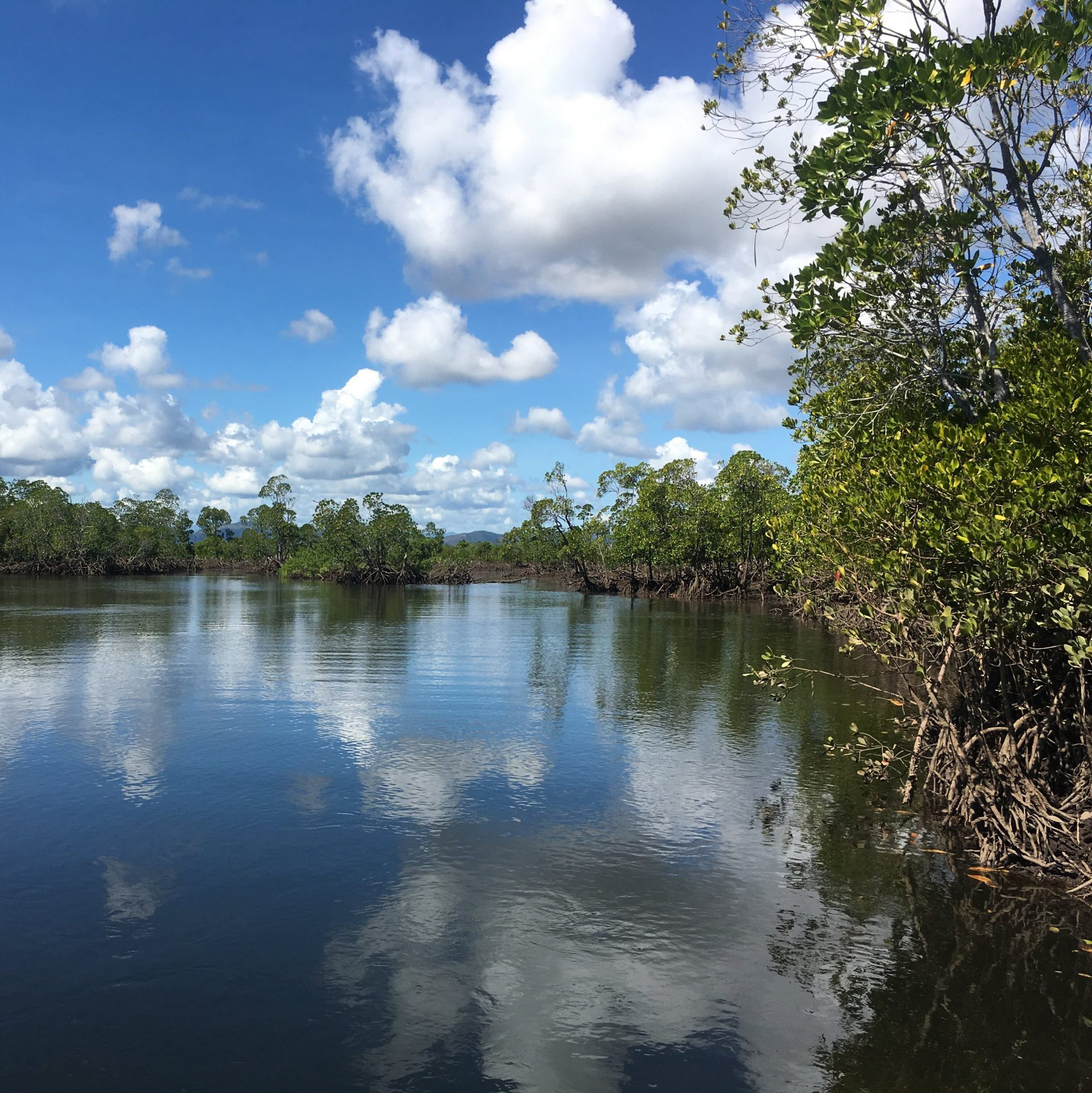

PREDICT
Role of small-scale physics in ocean carbon uptake
Ocean circulation is largely organized around eddies and fronts, small and highly dynamic structures that are the ocean equivalent of atmospheric cyclones, depressions and fronts. Our current estimates of the evolution of the oceanic carbon sink for the next few decades do not explicitly take these structures into account, even though they are critically important for the transfer of absorbed CO2 to the deep ocean. We estimated the impact of these structures on ocean carbon uptake by combining a theoretical approach, high-resolution modeling of ocean carbon uptake, analysis of observations obtained during recent ocean campaigns, and the use of satellite data for eddy tracking.

MITIGATE
Carbon Storage by Coastal Vegetation
Coastal ecosystems, mangroves, salt marshes, seagrass beds and macro-algae forests, are very productive ecosystems. Despite their confinement in a narrow band at the border between continent and ocean, their production could reach 10% of the world primary production of the ocean. Their role in the carbon cycle, and their contribution to carbon storage (in the sediment or in the deep ocean) is currently very uncertain – published estimates vary by an order of magnitude, with storage fluxes between 0.1 and 1 billion tons of carbon per year. We refined these estimates of the role of “blue carbon” in anthropogenic carbon storage by combining an innovative approach to measuring the stability of organic carbon produced by these ecosystems, and a modeling approach to represent these ecosystems in an Earth system model.

ADAPT
Ocean acidification and ecosystem impacts
Calcifying ecosystems and organisms (corals, mollusks, crustaceans, …) are among the most sensitive to ocean acidification. Indeed, the process of calcification, at the origin of the skeletons and shells of these organisms, is negatively impacted by the decrease in ocean pH. Here again, there are significant uncertainties about how these organisms and ecosystems are able to adapt to these changes in acidity. Initial experiments to ma- nipulate seawater chemistry, conducted on the Great Barrier Reef in Australia, have shown an increase in reef calcification, demonstrating that ocean acidification has already affected reef growth. We conducted this type of experiment on calcifying coastal ecosystems in temperate intertidal zones (Channel, North Atlantic). We complemented this experimental approach with a modeling approach to characterize the small-scale spatiotemporal variations of ocean acidification, and to simulate this localized ocean ‘‘alkalinization’’.
PhD students
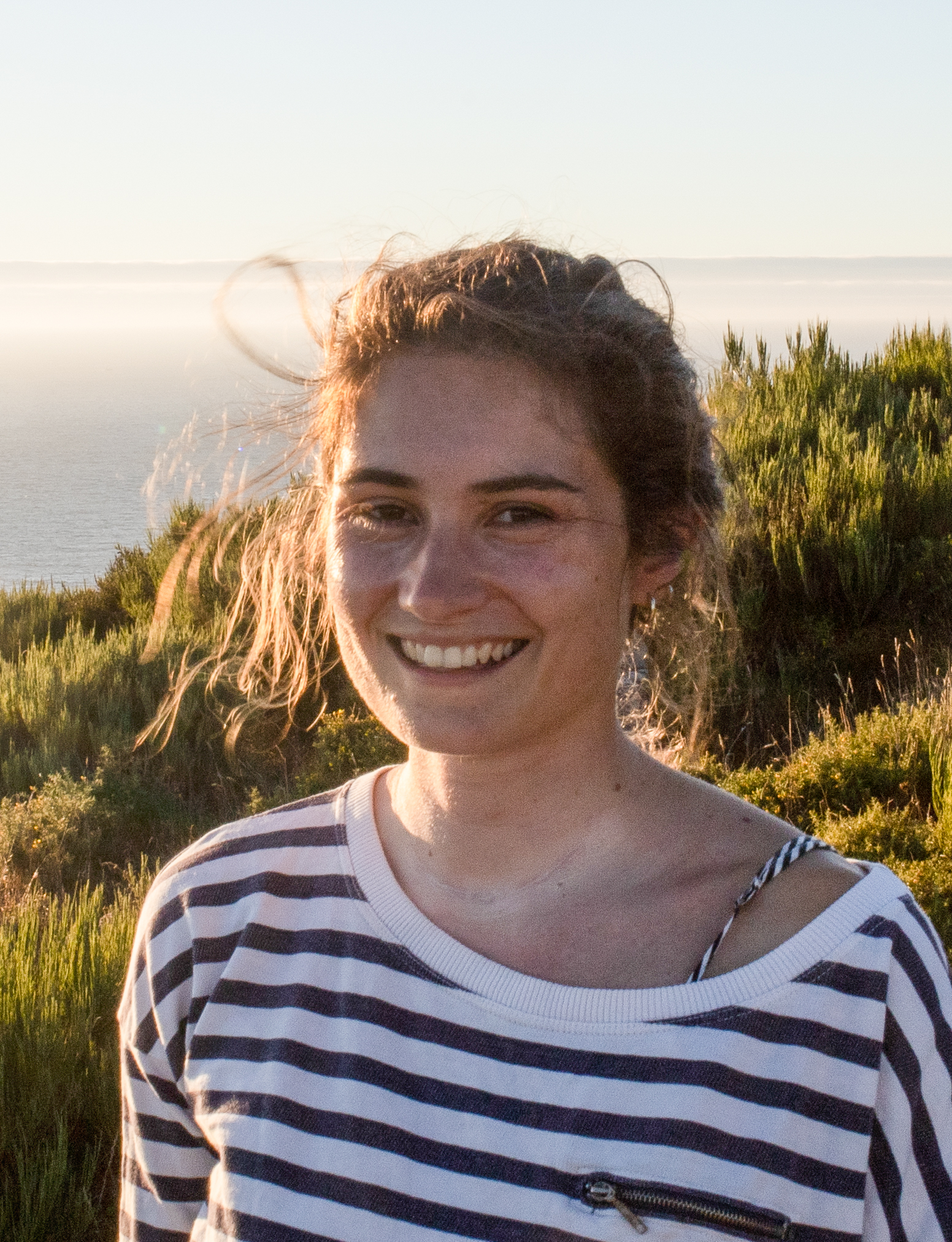
Manon Berger
My research project focuses on the contribution of macroalgal ecosystems to the ocean carbon cycle. These highly productive ecosystems are seen as a potential climate mitigation strategy. Using a modeling approach, I’m assessing the effectiveness and potential impacts of macroalgal cultivation.
Laetitia Parc
My research is focused on assessing the effects of rain on CO2 fluxes at the air-sea interface. The main objective of my PhD at the LMD-ENS is to conduct studies at different spatial and temporal scales to better understand the interplay of these effects and their potential impact on the oceanic carbon budget.
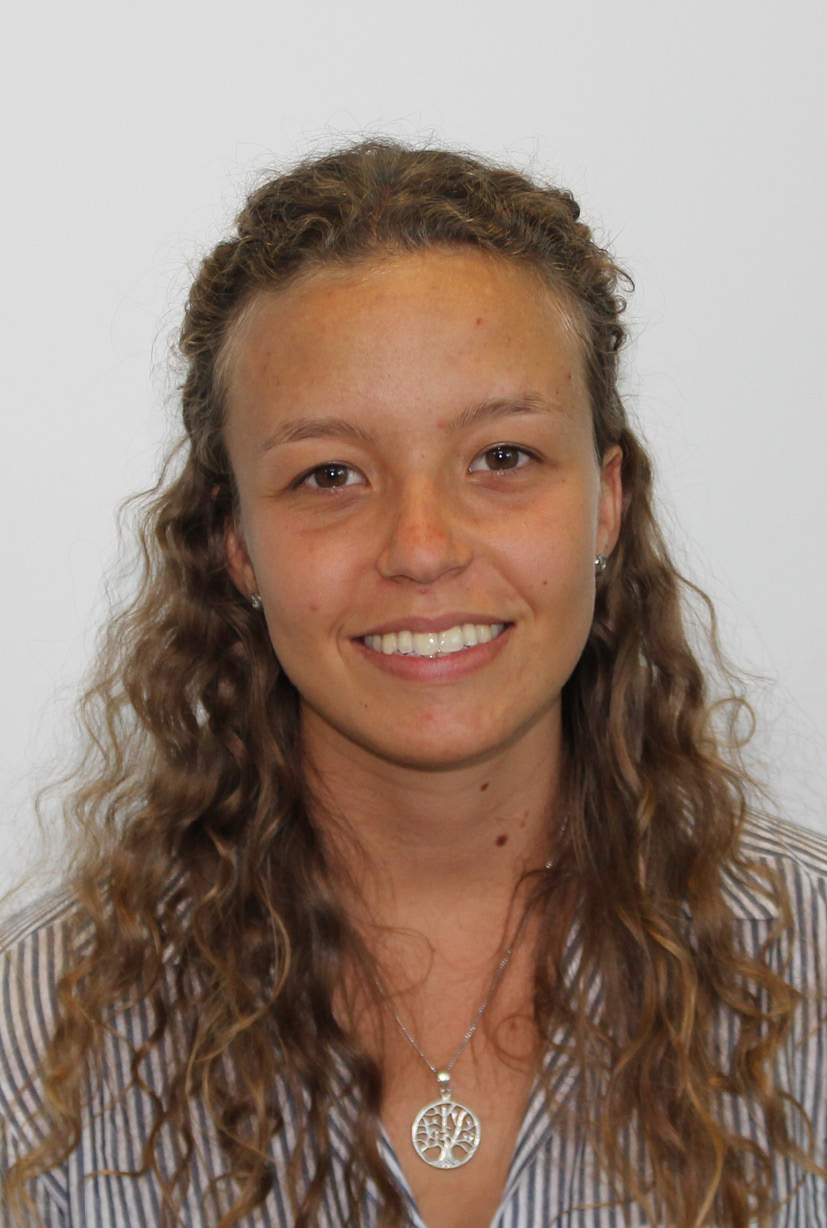
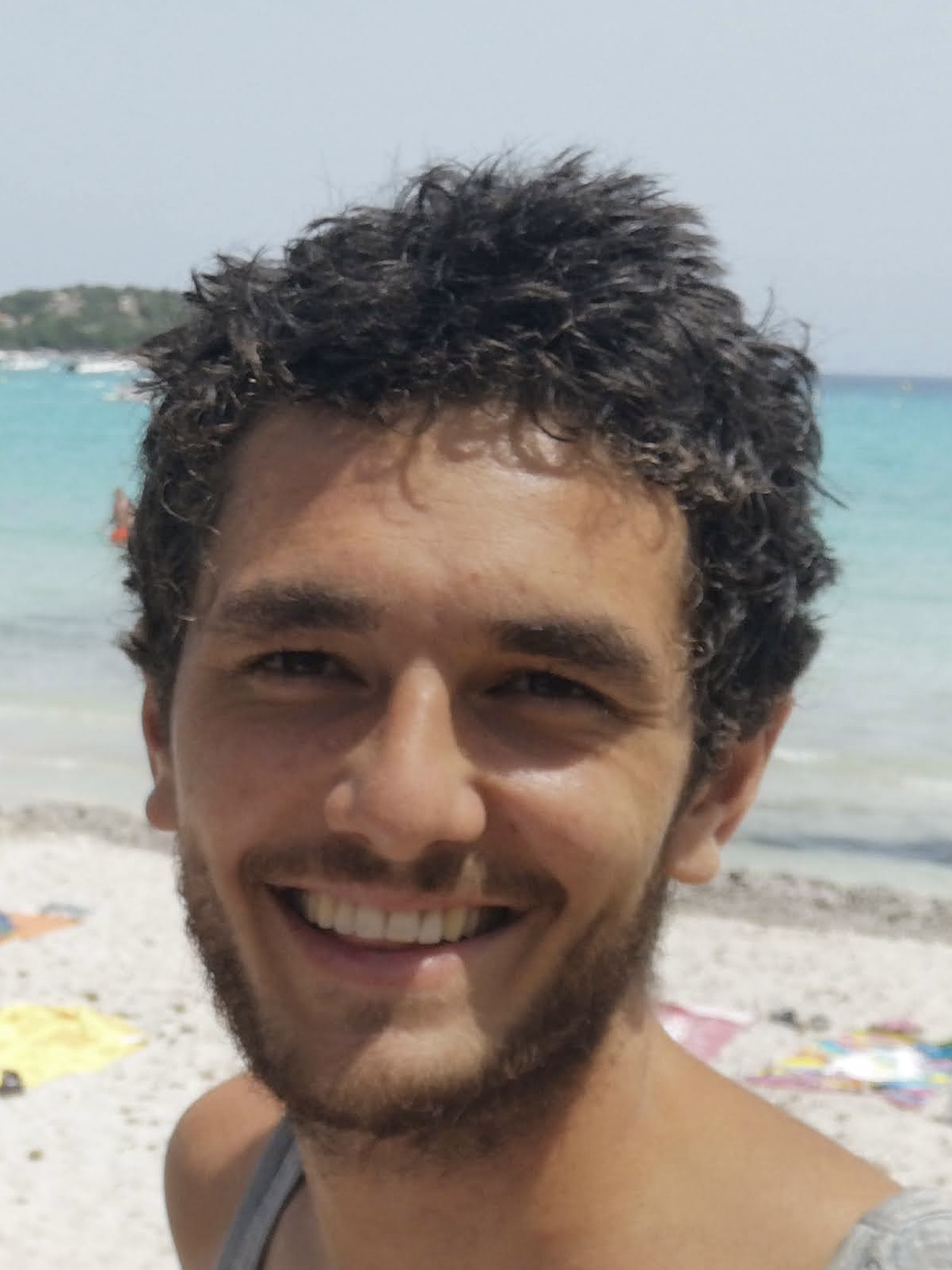
Alban Planchat
My research project focuses on the representation of alkalinity – a central biogeochemical variable in the understanding of the ocean carbon cycle – and calcifying organisms in Earth system models. We are assessing the biases in the modelling schemes and exploring avenues of development to better constrain future projections of marine biogeochemistry, particularly the feedback of the carbonate pump on anthropogenic carbon fluxes and acidification.
Post-doc researchers
Annemiek Stegehuis
I’m interested in the carbon cycle, land-atmosphere and land-ocean interactions. In this project I focus on the transport of carbon and alkalinity from mangrove ecosystems to the ocean. I use observations from different mangrove forests worldwide and a global land surface model that we will couple to an ocean model to better understand the carbon fluxes in the coastal mangrove systems.
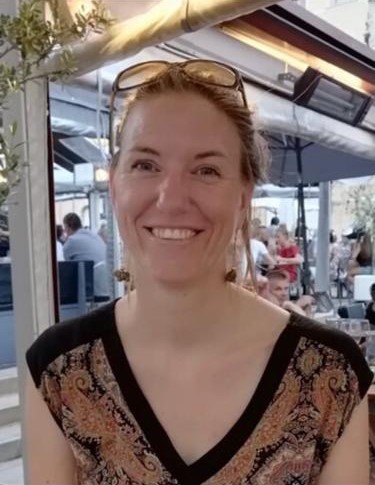
Former PhD students and post-doc researchers

Yanxu Chen, former PhD student
My general research interest is to understand the role of mesoscale ocean eddies in big-picture climate change. As part of my PhD at LMD-ENS, I am studying how important mesoscale features contribute to the oceanic horizontal heat transport and the uptake of anthropogenic carbon through the air-sea interface.
Damien Couespel, former PhD student
My research concentrates on understanding the sequestration of carbon by the ocean and the carbon pumps changes induced by global warming. I’m especially interested in quantifying the role of fine scale processes on the change in the biological carbon pump. To achieve this goal, I am using idealized numerical simulations of climate change at different resolutions.
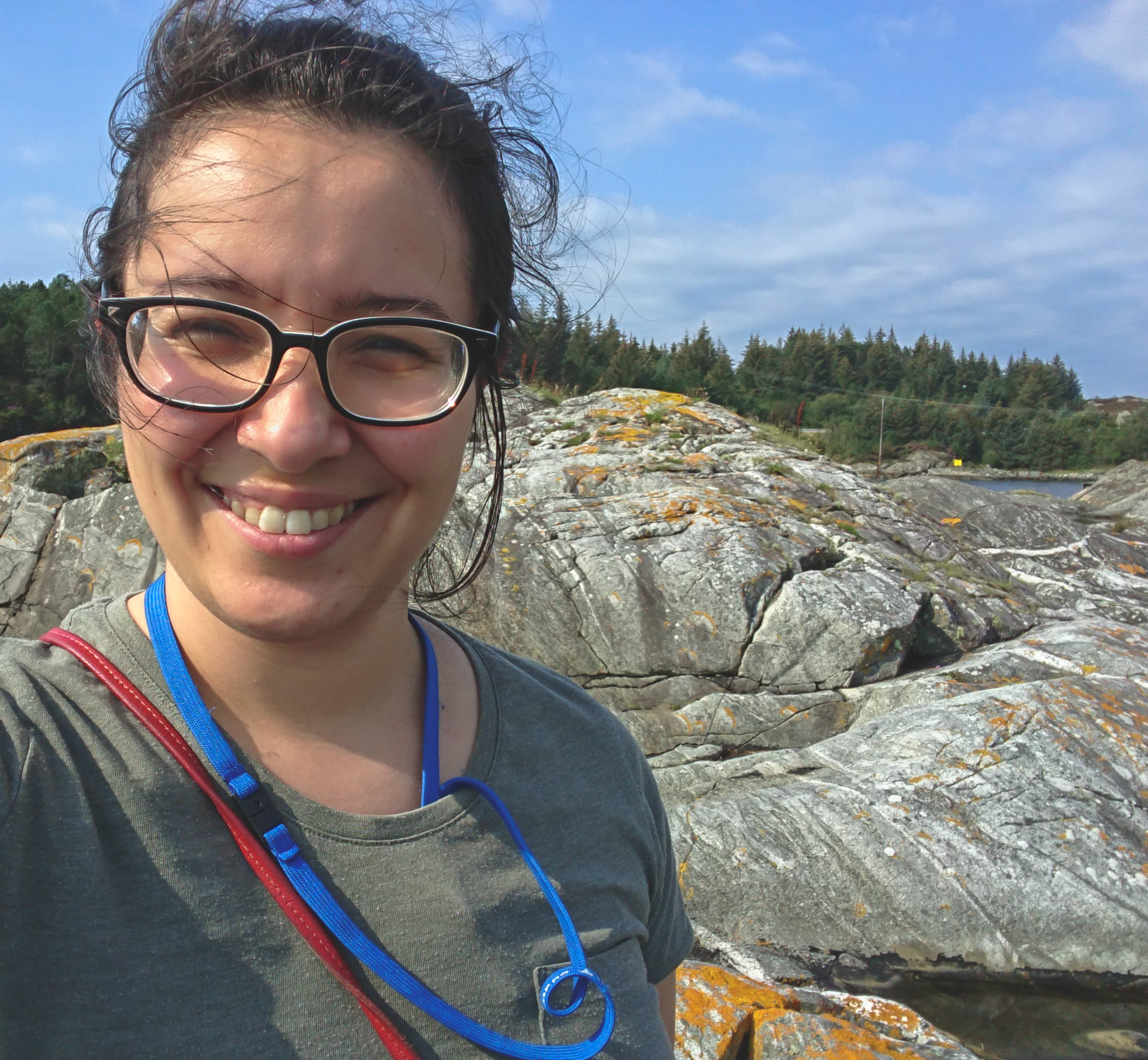
Narimane Dorey, former post-doc researcher
I am a Marine Biologist mostly interested by the impact of humans (climate change, ocean acidification, pollution) on the biology of marine invertebrates. Within the Climate, ocean and oceanic carbon project, I am investigating tidal pools: the natural variability of their carbonate chemistry (CO2, pH, alkalinity) and their responses to human-driven changes.
Clément Haëck, former PhD student
My research is focused on exploring how the small scale currents (meso and sub-mesoscale) shape phytoplankton communities. I study the region of the Gulf-Stream, where small scale fronts and associated vertical circulations are expected to influence phytoplankton concentration, composition and phenology. I use remote sensing data to detect these fronts and quantify their effect on phytoplankton.

Permanent researchers involved

Laurent Bopp
I am the coordinator of the Chanel-ENS Research Chair. My research focuses on the links between climate, climate change and marine biogeochemistry. In particular, I was among the first to use global climate models to explore how anthropogenic climate change might affect marine productivity and ecosystems as well as ocean air-sea fluxes. I have participated in the latest IPCC assessment reports as lead author (2013 and 2022).
Sabrina Speich
My research is centered on assessing the role of the ocean in climate variability, changes and climate extremes. My focus will be to understand small-scale ocean-atmosphere interactions to improve weather-to-climate predictions and how the ocean dynamics and climate change are shaping marine ecosystems.
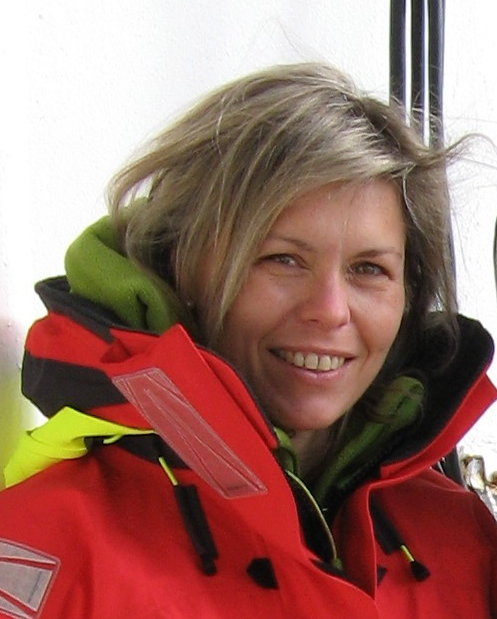
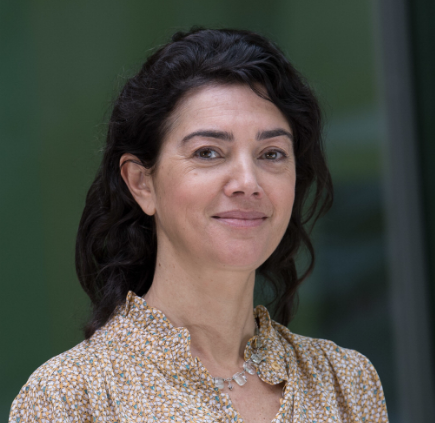
Marina Levy
My research focusses on the interactions between ocean physics, biogeochemistry, plankton and marine ecosystems, with a particular focus on the role of ocean turbulence. Ultimately we aim to be able to make better predictions for the future, particularly with regard to the carbon cycle, marine ecosystems, and marine biodiversity.
Lester Kwiatowski
My research concentrates on understanding how atmospheric carbon dioxide and climate affect the biogeochemistry of the oceans, and the implications for diverse marine ecosystems. As part of the Chanel chair at ENS I am conducting ocean chemistry manipulation experiments in the French Atlantic intertidal zone. We are exploring how these native calcifying ecosystems respond to ocean acidification. In parallel to this, we are using Earth system models to constrain projections of future ocean biogeochemistry.


David Ho
My involvement in the project will focus on blue carbon and the coastal carbon budget, including experimentally quantifying the export of dissolved carbon and alkalinity from mangrove ecosystems, and determining how land-use change affects carbon retention and export by comparing preserved versus degraded mangrove forests.
Bertrand Guenet
I am a specialist of soil biogeochemistry with a strong background in the study of lateral transfer of organic carbon into the aquatic ecosystems (lakes, rivers, oceans). I will be in charge of the development of the incorporation of the mangroves ecosystems into the land surface model ORCHIDEE with a particular focus on below-ground processes, the connection with the coastal ocean, and the coupling with the NEMO-PISCES model.


Hugo Bellenger
I am an atmospheric physics scientist with a strong interest in air-sea interactions. In the Chanel chair framework, I will focus on how changes in temperature and salinity induced by evaporation and rainfall impact the global ocean CO2 sink. This will be done using in situ and satellite observations. This will also lead to the development of parameterizations for Earth system models that will be tested with the model developed in Institut Pierre Simon Laplace.

Role of small-scale physics in ocean carbon uptake
Ocean circulation is largely organized around eddies and fronts, small and highly dynamic structures that are the ocean equivalent of atmospheric cyclones, depressions and fronts. Our current estimates of the evolution of the oceanic carbon sink for the next few decades do not explicitly take these structures into account, even though they are critically important for the transfer of absorbed CO2 to the deep ocean. We estimated the impact of these structures on ocean carbon uptake by combining a theoretical approach, high-resolution modeling of ocean carbon uptake, analysis of observations obtained du- ring recent ocean campaigns, and the use of satellite data for eddy tracking.
The oceanic fine scales (0.1-100 km) have relatively short lifetimes (days/weeks to months) but crucially affect ocean physics and ecology up to the climate scale, due to the strong gradients created by their energetic dynamics. These gradients are associated with strong vertical transport connecting the ocean’s upper layer to its interior. The horizontal and vertical fine-scale dynamics modulate the energy cascade as well as air-sea interactions. This processes are important as they regulate the ocean ventilation and subduction which are key processes that regulate the transport of water (and associated properties) from the surface mixed layer, which is in contact with the atmosphere, to the ocean’s interior, which is isolated from the atmosphere for a timescale set by the large-scale circulation.
In this context, we focus on ocean ventilation that is the process by which air–sea fluxes of properties such as heat and carbon penetrate into the enormous reservoir that is the ocean interior. Waters recently exposed to the atmosphere, which reside in the ocean’s surface mixed layer, pass into the ocean’s interior; this is balanced by entrainment of waters from the ocean interior into the ocean mixed layer. The values of mixed-layer properties such as temperature and carbon content depend on the rate of this exchange as well as the uptake from the atmosphere. Indeed, the atmospheric uptake of heat and carbon itself also depends on ocean ventilation through this impact of exchange on mixed-layer temperature and carbon. Consequently, ocean ventilation plays a key role in modulating climate variability on interannual to decadal (and even centennial) timescales.
Recent studies point out to meso- and sub-mesoscale processes as the key player in air-sea interactions and ocean ventilation. The fidelity of numerical prediction and future climate projections relies on an accurate representation of air-sea interactions and ocean ventilation. Hence measuring the time-evolving 3D fine-scale upper 1000 m ocean dynamics together with the Marine Boundary Layer and the lower atmosphere is key in advancing our understanding to improve modelling and forecasting capabilities. On the other hand, existing satellite data and models show the co-variability of air–sea interface properties (wind speed, air temperature, humidity, and SST) to have a scale dependence, but disagree on smaller spatial scales.
The project has been fundamental in providing support to the work to progress on these phenomena. It has co-funded elements of the exceptionally innovative field experiment EUREC4A-OA. It has also provided funding to young researchers who are delivering novel insights in the biophysical processes at play as well as innovative methodologies that are or will be provided to the large scientific community.
Using global ocean in-situ and satellite data together with high-resolution observations acquired within EUREC4A-OA, we are developing new understanding on the contribution of ocean eddies and fronts, down to 0.1 km resolution, to the regional (mid-latitude versus tropical for instance) air–sea inputs to the global climate cycles assessed via the energy, water and carbon budgets. Moreover, we are building on new methodologies to take advantage of the millions of vertical profiles acquired by the in- ternational Argo profiling floats programme, as well as by hydrographic observations from research vessels, to assess the processes responsible of the heat and carbon uptake and storage upper 1000 m ocean ventilation. These budgets are placed in the context of previous energy, water and carbon cycle studies. These estimates will provide further insight in the development of improved parametrizations of these fluxes in numerical models.

Carbon storage by coastal vegetation
Coastal ecosystems, mangroves, salt marshes, seagrass beds and macro-algae forests, are very productive ecosystems. Despite their confinement in a narrow band at the border between continent and ocean, their production could reach 10% of the world primary production of the ocean. Their role in the carbon cycle, and their contribution to carbon storage (in the sediment or in the deep ocean) is currently very uncertain – published estimates vary by an order of magnitude, with storage fluxes between 0.1 and 1 billion tons of carbon per year. We refined these estimates of the role of “blue carbon” in anthropogenic carbon storage by combining an innovative approach to measuring the stability of organic carbon produced by these ecosystems, and a modeling approach to represent these ecosystems in an Earth system model.
In this axis, we mainly focus on the carbon (C) balance of coastal ecosystems in particular mangroves and macroalgae, investigating this question using both modelling tools and field work. Moreover, since coastal ecosystems are by definition at the interface between the land and the ocean, different modelling tools are used here.
The first one is the ocean model NEMO-PISCES. This ocean model is a key tool for the field of oceanography in particular because it is used to represent ocean is several Earth system models. In this project, we implemented the explicit representation of macroalgae in the model and we evaluate how it impacts the ocean C balance and how this ocean C balance is impacted by the nutrients (nitrogen, phosphorous, etc.) availability when microalgae are considered. We observed that macroalgae are responsible for 20% of the ocean carbon fixation and this can be increase if nutrients are not limited. Nevertheless, implementation of macroalgae in the model largely reduce the C fixation by microalgae underlining a possible competition between the two primary producers.
The second model used is ORCHIDEE a land surface model also used in Earth system models. Here we implemented the representation of mangroves and we observed that the C in the sediments largely increase when comparing the model with or without mangroves showing a high potential of C fixation in the model as generally observed in the field. Some aspects of the C cycle are not fully implemented yet, in particular the inorganic part of the C cycle. Some developments are therefore still needed to fully estimate the C balance of mangroves ecosystems.
Last but not least, important data were obtained after in field campaign in Madagascar in 2019. Other field campaigns were initially planned but because of the COVID pandemic they were postponed. Nevertheless, we estimated the lateral flux from mangroves to the ocean in two contrasted contexts. The first one was a degraded mangrove due to anthropogenic activities and the second one was in non-degraded site. Despite having only one sampling campaign we already observed that the lateral fluxes from the land to the ocean are largely different between the two sites suggesting that mangroves are an important driver of the lateral C transfer.
Thus, at the mid-term of the project, we already did significant progress in all the aspects proposed in the project and interesting preliminary results were obtained that need to be confirmed by continuing models developments and by increasing our samples size.

Ocean acidification and ecosystem impacts
Calcifying ecosystems and organisms (corals, mollusks, crustaceans, …) are among the most sensitive to ocean acidification. Indeed, the process of calcification, at the origin of the skeletons and shells of these organisms, is negatively impacted by the decrease in ocean pH. Here again, there are significant uncertainties about how these organisms and ecosystems are able to adapt to these changes in acidity. Initial experiments to ma- nipulate seawater chemistry, conducted on the Great Barrier Reef in Australia, have shown an increase in reef calcification, demonstrating that ocean acidification has already affected reef growth. We conducted this type of experiment on calcifying coastal ecosystems in temperate intertidal zones (Channel, North Atlantic). We complemented this experimental approach with a modeling approach to characterize the small-scale spatiotemporal variations of ocean acidification, and to simulate this localized ocean ‘‘alkalinization’’.
At the mid-term of the project, substantial achievements in ocean acidification research and associated ecosystem impacts have been made across a broad range of disciplines and spatiotemporal scales. This ongoing body of work is expanding our scientific understanding of how ocean carbon uptake and climate change interact to influence ocean chemistry and sensitive ecosystems. Our findings have significant implications from local ecosystem management to international climate policy.
The Arctic Ocean is the open ocean region most susceptible to future acidification. However, estimates of the regional anthropogenic carbon inventory are highly uncertain. Utilizing an ensemble of Earth system models (CMIP5), we identified an emergent relationship between the simulated present-day density of arctic surface waters, projections of the anthropogenic carbon inventory and coincident acidification over the twenty- first century. Our results, published in Nature, indicate greater regional carbon storage and ocean acidification than previously projected (Terhaar et al., 2020). Follow-up work using the latest state-of-the-art models (CMIP6) suggests that the representation of the Arctic freshwater cycle is critical to robust projections of ocean acidification in this region (Terhaar et al., 2021).
As part of global efforts to evaluate this latest generation of Earth system model (CMIP6) projections, we have contributed to extensive analyses of simulated ocean biogeochemistry, including twenty-first century projections of ecosystem stressors such as ocean acidification and warming (Kwiatkowski et al., 2020). These studies represent powerful resources to both the biological and physical sciences. Current work is asses- sing how these projections may be influenced by rapid and unprecedented decarbonisa- tion (overshoot scenarios), and the representation of CaCO3 cycling.
The diurnal variability of the ocean CO2 system is likely to influence marine ecosystems yet remains spatially and temporally poorly constrained. In a recent study published in GRL, we asses this diurnal variability and its drivers using observations collected over multiple years at stations located in diverse marine environments (Torres et al., 2021). Extremes in diurnal CO2 system variability (which are comparable in magnitude to seasonal cycles and can surpass projected changes in mean states of CO2 over the twenty-first century) were found to be significant in the open ocean but particularly high at coastal sites and near coral reefs. Ongoing work is focused on resolving diurnal CO2 system variability in an ocean biogeochemical model and exploring how it responds to climate change.
Ocean acidification will likely negatively impact marine coastal communities. In particular, the ability of organisms to survive, grow and calcify. To test the effects of future ocean acidification on coastal communities, we have conducted field experiments in Roscoff (Brittany), over multiple seasons. We observed how the ocean CO2 system and community calcification rates evolved, during the day and night, in tidal pools that we also manipulate to “future” acidified conditions. Preliminary results show pools in ‘‘future’’ acidified water conditions appear to experience increased dissolution which would have important implications for the growth – and potentially the survival – of intertidal coastal organisms and ecosystems.
2023
Ocean dynamics and biological feedbacks limit the potential of macroalgae carbon dioxide removal
Berger, M., Kwiatkowski, L., Ho, D. T., and Bopp, L. (2023)
Environ. Res. Lett., 18, 024039, doi:10.1088/1748-9326/acb06e
Satellite data reveal earlier and stronger phytoplankton blooms over fronts in the Gulf Stream region
Haëck, C., Lévy, M., Mangolte, I., and Bopp, L. (2023)
EGUsphere, 1–27, doi:10.5194/egusphere-2022-1489
Modified future diurnal variability of the global surface ocean CO2 system
Kwiatkowski, L., Torres, O., Aumont, O., and Orr, J. C. (2023)
Global Change Biology, 29, 982–997, doi:10.1111/gcb.16514
2022
Diazotrophy as a key driver of the response of marine net primary productivity to climate change
Bopp, L., Aumont, O., Kwiatkowski, L., Clerc, C., Dupont, L., Ethé, C., Séférian, R., and Tagliabue, A. (2022)
Biogeosciences Discussions 1–31, doi:10.5194/bg-19-4267-2022
Formation and transport of the South Atlan- tic Subtropical Mode Water in eddy-permitting observations
Chen, Y., S. Speich, R. Laxenaire (2022)
Journal of Geophysical Research, doi:10.1029/2021JC017767
Global Carbon Budget 2022
Friedlingstein, P., et al. (2022)
Earth System Science Data, 14, 4811–4900, doi:10.5194/essd-14-4811-2022
Wintertime process study of the North Brazil Current rings reveals the region as a larger sink for CO2 than expected
Olivier, L., Boutin, J., Reverdin, G., Lefèvre, N., Landschützer, P., Speich, S., Karstensen, J., Labaste, M., Noisel, C., Ritschel, M., Steinhoff, T., and Wanninkhof, R. (2022)
Biogeosciences, 19, 2969–2988, 2022, doi:10.5194/bg-19-2969-2022
Arctic Ocean annual high in pCO2 could shift from winter to summer
Orr, J. C., Kwiatkowski, L., and Pörtner, H.-O. (2022)
Nature, 610, 94–100, doi:10.1038/s41586-022-05205-y
The representation of alkalinity and the carbonate pump from CMIP5 to CMIP6 ESMs and implications for the ocean carbon cycle
Planchat, A., Kwiatkwoski, L., Bopp, L., et al. (2022)
EGUsphere, 1–76, doi:10.5194/egusphere-2022-1041
2021
Oceanic primary production decline halved in eddy-resolving simulations of global warming
Couespel, D., Lévy, M. and Bopp, L. (2021)
Biogeosciences Discussions started: 8 Fe- bruary 2021, doi:10.5194/bg-2021-14
Global Carbon Budget 2021
Friedlingstein, P., Jones, M.W., O’Sullivan, M., Andrew, R.M., Bakker, D.C.E., Hauck, J., Le Quéré, C., Peters, G.P., Peters, W., Pongratz, J., et al. (2021)
Earth System Science Data Discussions 1–191, doi:10.5194/essd-2021-386
Impact of North Brazil Current rings on air-sea CO2 flux variability in winter 2020
Olivier, L., Boutin, J., Reverdin, G., Lefèvre, N., Landschützer, P., Speich, S., Karstensen, J., Ritschel, M., and Wanninkhof, R. (2021)
Biogeosciences Discussions 1–30, doi:10.5194/bg-2021-269
Formation and Evolution of a Freshwater Plume in the Northwestern Tropical Atlantic in February 2020
Reverdin, G., Olivier, L., Foltz, G.R., Speich, S., Karstensen, J., Horstmann, J., Zhang, D., Laxenaire, R., Carton, X., Branger, H., et al. (2021)
Journal of Geophysical Research: Oceans 126, e2020JC016981, doi:10.1029/2020JC016981
Ship- and island-based at- mospheric soundings from the 2020 EUREC4A field campaign
Stephan, C.C., Schnitt, S., Schulz, H., Bellenger, H., de Szoeke, S.P., Acquistapace, C., Baier, K., Dauhut, T., Laxenaire, R., Morfa-Avalos, Y., et al. (2021)
Earth System Science Data 13, 491–514, doi:10.5194/essd-13-491-2021
Around one third of current Arctic Ocean primary production sustained by rivers and coastal erosion
Terhaar, J., Lauerwald, R., Regnier, P., Gruber, N., and Bopp, L. (2021)
Nature Communications 12, 169, doi:10.1038/s41467-020-20470-z
Characterizing Mean and Extreme Diurnal Variability of Ocean CO2 System Variables Across Marine Environments
Torres, O., Kwiatkowski, L., Sutton, A. J., Dorey, N., and Orr, J. C. (2021)
Geophysical Research Letters, 48, e2020GL090228, doi:10.1029/2020GL090228
2020
Consistency and Challenges in the Ocean Carbon Sink Estimate for the Global Carbon Budget
Hauck, J., Zeising, M., Le Quéré, C., Gruber, N., Bakker, D.C.E., Bopp, L., Chau, T.T.T., Gürses, Ö., Ilyina, T., Landschützer, P., et al. (2020)
Frontiers in Marine Science 7, doi:10.3389/fmars.2020.571720
Twenty-first century ocean warming, acidification, deoxygenation, and upper-ocean nutrient and primary production decline from CMIP6 model projections
Kwiatkowski, L., Torres, O., Bopp, L., Aumont, O., Chamberlain, M., Christian, J.R., Dun- ne, J.P., Gehlen, M., Ilyina, T., John, J.G., et al. (2020)
Biogeosciences 17, 3439–3470, doi:10.5194/bg-17-3439-2020
Emergent constraint on Arctic Ocean acidification in the twenty-first century
Terhaar, J., Kwiatkowski, L., and Bopp, L. (2020)
Nature 582, 379–383, doi:10.1038/s41586-020-2360-3


